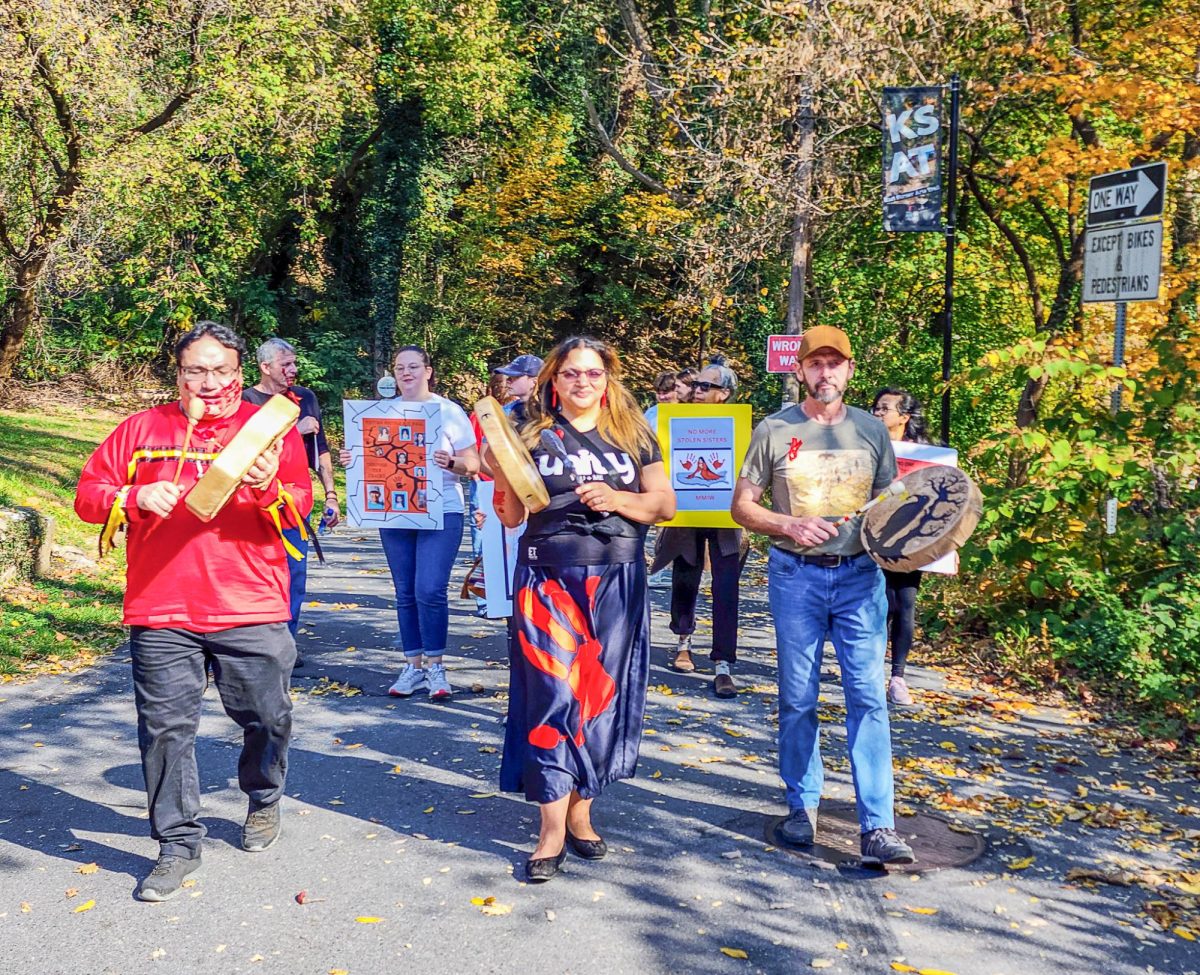The Karl Stirner Arts Trail and the PAZA, Tree of Life non-profit organization partnered to host the second annual Red Sand Project event last Saturday to raise awareness of the human trafficking of Native Americans.
The Red Sand Project is an international project inviting communities to fill in cracks in sidewalks and pavements with red sand as a metaphor for not letting anyone fall through the cracks of human trafficking.
“Easton is recognized as the land that had a vibrant indigenous culture of the Lenni Lenape for thousands of years and PAZA, being a native cultural group, and the arts trail felt it was important that we recognize that,” art professor Jim Toia, executive director of the Karl Stirner Arts Trail, said.
This year, in addition to the Red Sand Project, the event included a walk for the missing and murdered indigenous women movement and an installation of the REDress Project, which showcases empty red dresses in commemoration of lost Native American lives.
While all three of these initiatives exist on national and international levels, both organizations felt it important to bring these projects to the Easton community.
“A lot of people think that human trafficking happens somewhere in other countries, but … there was like a hundred and ninety-two cases of human trafficking right here in the Lehigh Valley,” Maria Ragonese, director of operations at PAZA, Tree of Life, said. “I think that people don’t realize it’s in their own backyard, and so, I think it’s important to be aware of what’s going on and have information available, to try to keep us all safer, but also, it’s a really relevant issue that we don’t have enough hands on.”
Around 20 people attended the event, including Lafayette students.
“It was a very moving installation,” Emily Mackin ’24, a student volunteer of the Karl Stirner Arts Trail, said. “I had a little knowledge of what the project was nationally … but it was kind of interesting to see this take place on the arts trail.”
Both the Karl Stirner Arts Trail and PAZA, Tree of Life want to continue this event in future years and hope that the Lafayette community will continue to become more involved in these important projects.
“I mean, we just see that having people interact and do something that is symbolic, it really drives it home, and then we had a lot of good discussion around it,” Ragonese said. “I think that the point is that we need to keep talking about it.”
“I think that there’s such a power in art’s ability to not only make a statement but educate and bring together communities and perspectives and people, mostly,” Mackin said. “So, this was an example of one of the many projects the art trails shows, but this is a really beautiful example of the intersection between community and art and how it can affect people individually, but also collectively.”



























































































































